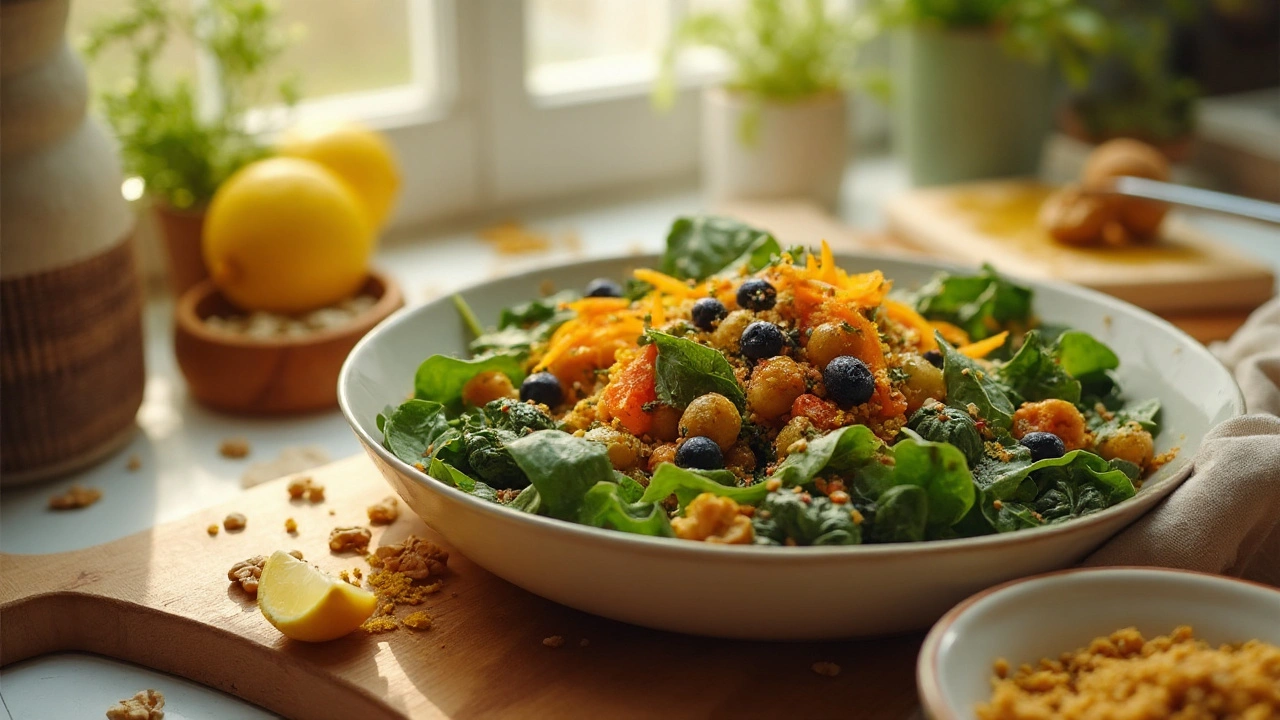Best Anti‑Inflammatory Foods to Calm Your Body
If you’re tired of joint aches, stomach upset, or just feeling sluggish, the first place to look is your plate. Certain foods can dial down the fire inside you, while others keep feeding it. Below you’ll find the highest‑impact choices and quick tips to make them part of everyday meals.
Why Food Matters for Inflammation
Inflammation is the body’s alarm system. It helps you heal, but when it stays turned on, it damages tissue and fuels chronic problems like arthritis, heart disease, and even mood swings. The chemicals that trigger this alarm are called cytokines. Some foods raise cytokine levels; others lower them. By swapping a few high‑sugar, processed items for natural, nutrient‑dense options, you give your immune system a chance to reset.
Top 10 Anti‑Inflammatory Foods and How to Use Them
1. Berries (blueberries, strawberries, raspberries) – Packed with antioxidants called anthocyanins. Toss a handful into yogurt, blend into a smoothie, or snack straight from the bowl.
2. Fatty fish (salmon, sardines, mackerel) – Rich in omega‑3s that block inflammatory pathways. Grill a fillet, add to salads, or mix into a quick fish taco.
3. Leafy greens (spinach, kale, collard greens) – Loaded with vitamins A, C, and K. Sauté with garlic for a side, or blend into a green smoothie for breakfast.
4. Nuts and seeds (almonds, walnuts, chia, flaxseed) – Provide healthy fats and magnesium. Sprinkle them on oatmeal, salads, or eat a small handful as a snack.
5. Olive oil (extra‑virgin) – Contains oleocanthal, a natural anti‑inflammatory compound. Use it for dressings, drizzle over roasted veg, or replace butter in cooking.
6. Turmeric – The active ingredient curcumin is a powerhouse. Stir a pinch into soups, stir‑fries, or make a golden milk latte with a dash of black pepper for better absorption.
7. Ginger – Works like a mini‑painkiller for the gut. Add fresh grated ginger to teas, marinades, or sautéed veggies.
8. Tomatoes – Offer lycopene, especially when cooked. Make a simple sauce, roast slices, or blend into a salsa.
9. Green tea – Supplies catechins that calm inflammation. Sip a cup in the morning or swap coffee for tea a few times a day.
10. Dark chocolate (70%+ cocoa) – Contains flavonoids that lower cytokines. Enjoy a square after dinner, but keep portions small.
Switching to these foods doesn’t require a complete overhaul. Start by adding one new item each week. For example, swap your usual snack for a handful of walnuts, or replace a sugary soda with green tea. Small, consistent changes add up fast.
Remember to pair anti‑inflammatory foods with lifestyle habits that support them: stay hydrated, get enough sleep, and move your body daily. When you feed your system the right fuel, the fire inside eases, and you’ll notice better energy, clearer skin, and fewer aches.
Try a simple “anti‑inflammation starter pack” today: a bowl of mixed berries, a drizzle of olive oil over a spinach salad, and a grilled salmon fillet. That’s a complete, low‑effort meal that hits several of the top foods at once. Keep experimenting, and you’ll find a tasty, sustainable way to keep inflammation in check.
Top 10 Anti-Inflammatory Foods to Boost Your Health
Discover the ten most powerful anti-inflammatory foods, why they matter, and practical ways to add them to your meals for lasting health benefits.

